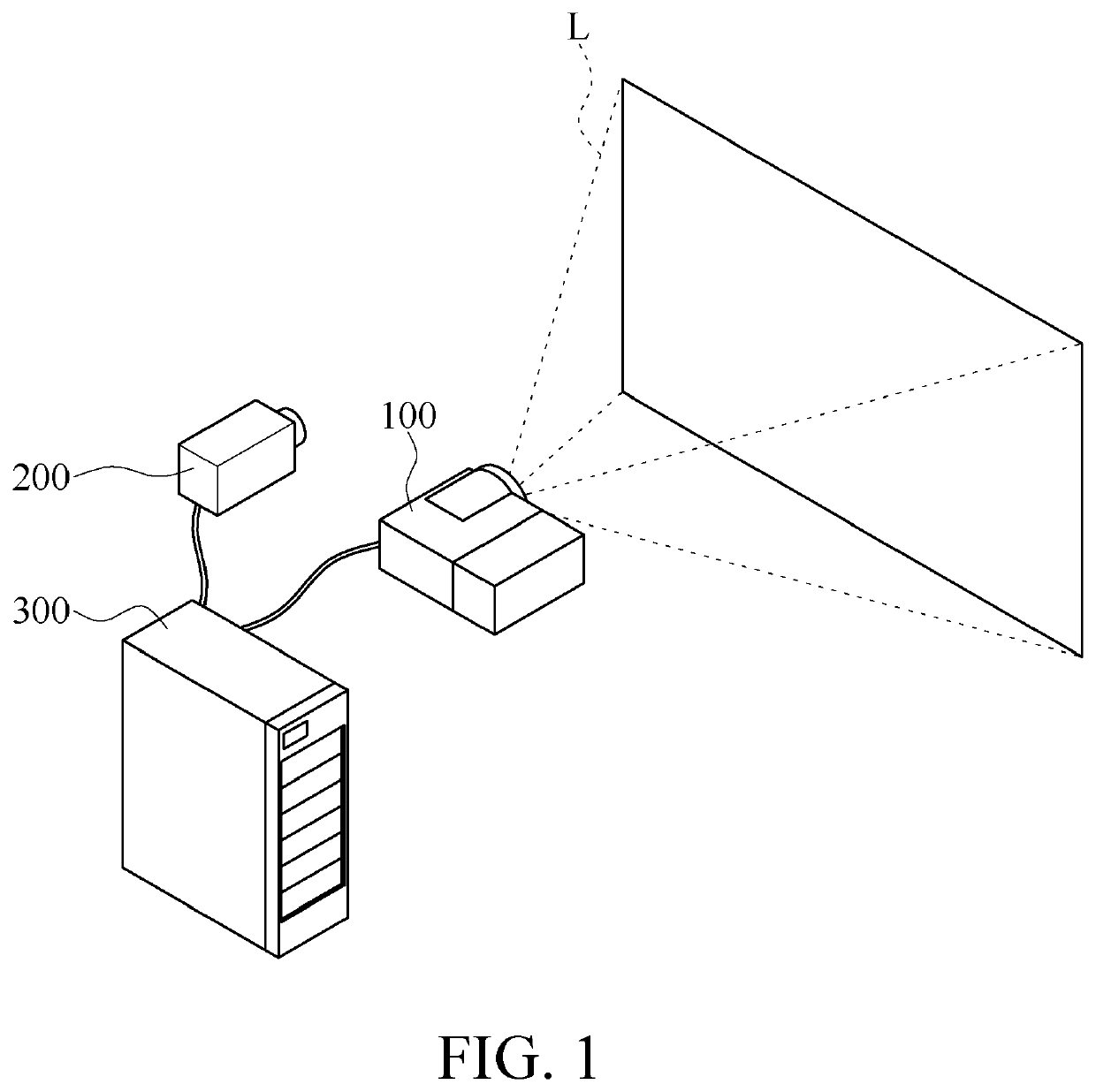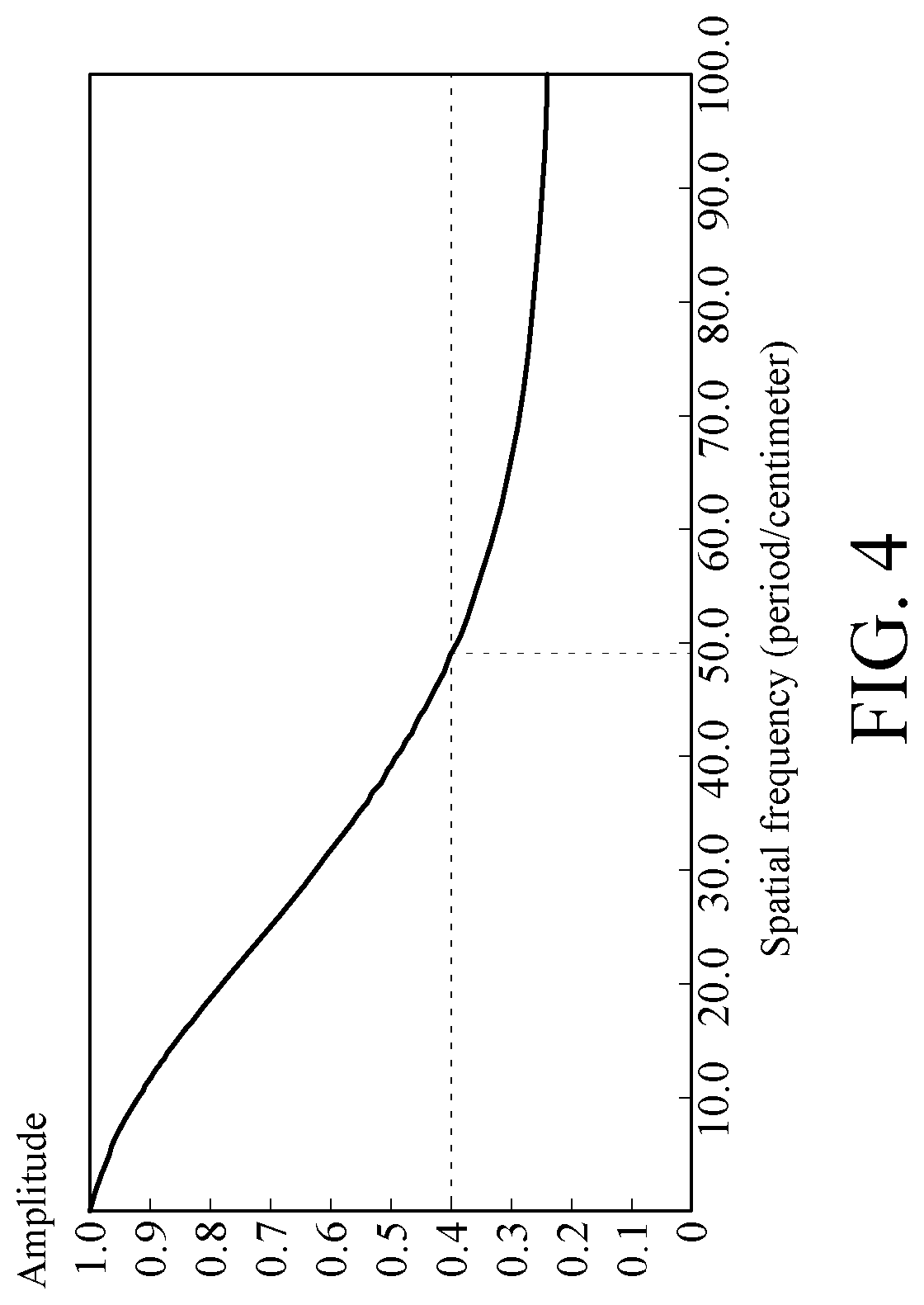Three-dimensional scanning system
- Summary
- Abstract
- Description
- Claims
- Application Information
AI Technical Summary
Benefits of technology
Problems solved by technology
Method used
Image
Examples
Embodiment Construction
[0018]Referring to FIG. 1, FIG. 1 is a schematic diagram of a three-dimensional scanning system according to an embodiment of the present invention. The three-dimensional scanning system includes a projection light source 100, an image capturing apparatus 200, and a signal processing apparatus 300.
[0019]The projection light source 100 is configured to project a two-dimensional light L to a target (not shown). The projection light source 100 may include one or more projection apparatuses. The two-dimensional light L refers to a light that can be projected on a two-dimensional space to form an illumination range. The two-dimensional light L has a spatial frequency (or referred to as a spatial resolution). That is, the two-dimensional light L includes a same geometric structure that repeatedly appears per unit of length, and the repetition frequency is the spatial frequency. As shown in FIG. 1, the two-dimensional light L can be projected on a plane to form a quadrangular illumination ...
PUM
 Login to View More
Login to View More Abstract
Description
Claims
Application Information
 Login to View More
Login to View More - R&D
- Intellectual Property
- Life Sciences
- Materials
- Tech Scout
- Unparalleled Data Quality
- Higher Quality Content
- 60% Fewer Hallucinations
Browse by: Latest US Patents, China's latest patents, Technical Efficacy Thesaurus, Application Domain, Technology Topic, Popular Technical Reports.
© 2025 PatSnap. All rights reserved.Legal|Privacy policy|Modern Slavery Act Transparency Statement|Sitemap|About US| Contact US: help@patsnap.com



